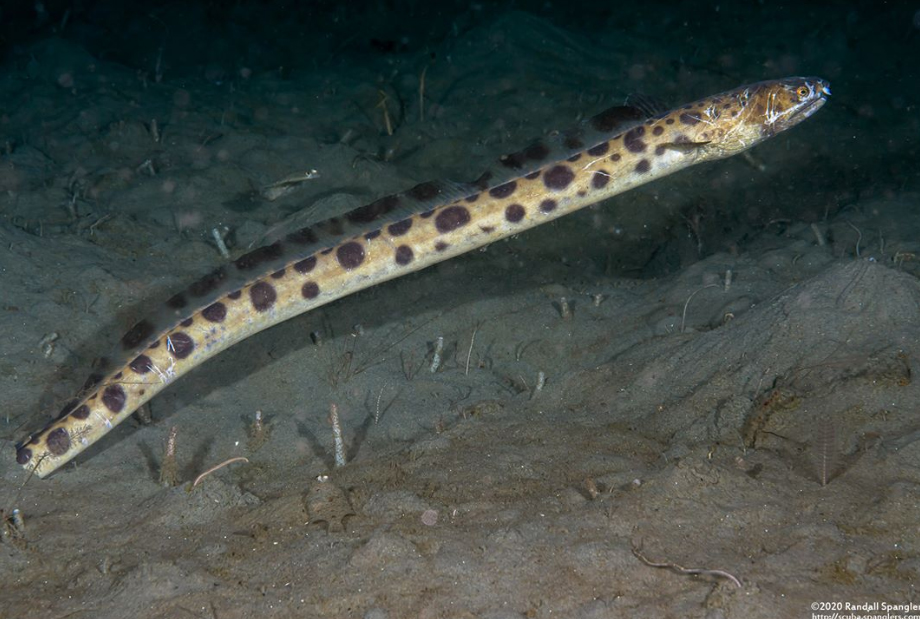Since 2013 and the onset of multiple, long-lasting marine heatwaves (MHWs), Monterey Bay has seen its fair share of strange visitors–and we are not talking about tourists! With the increases in water temperature that is associated with MHWs (e.g., during the “Blob” or an ENSO event) come species from southern California, and even Baja California.
Diver Richard Spangler (website) recently posted a photo of a very rare visitor indeed. During a dive at the Monterey Bay breakwater, a popular diving spot within the sanctuary, Spangler photographed a Pacific Snake Eel (Ophichthus triserialis).

Snake eels are in the Family Ophichthidae (say that 10x fast), and only two species occur within Monterey Bay National Marine Sanctuary, the Yellow Snake Eel and the Pacific Snake Eel.
The Yellow Snake Eel, Ophichthus zophochir Jordan and Gilbert, 1882 was once observed at the powerplant intake screen at Moss Landing Harbor in April 1969 and in San Francisco Bay in 1964 and 1999 (Burton and Lea, 2019). This species is rather common in southern California waters and was most likely transported northward during warm-water events in the past.
The Pacific Snake Eel (also known as the Spotted Snake Eel), Ophichthus triserialis (Kaup, 1856), was observed in Moss Landing Harbor during November 1967, but it is considered rare in California. This species has also been taken from San Francisco Bay (Hopkirk, 1965) and WSW of the Klamath River (Quirollo and Dinnel, 1975).
Additional reports of Pacific Snake Eels have been noted on iNaturalist.org, a community-based science program that gathers observations of organisms. One individual was observed January 2020 near Arcata in northern California (link) and another in June 2019, which was found near Cape Alava, Washington (link).
As MHWs continue to increase in frequency, intensity, and duration, we can expect to observe more visitors from sub-tropical and tropical climates, and we can also expect some of them to become permanent members of the local marine community.